Difficulties in choosing heating radiators: which ones are best for an apartment?
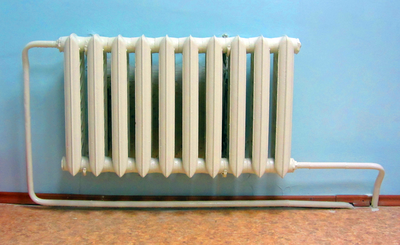
Cast iron radiators installed back in Soviet times no longer meet the needs of their owners. Apartment owners are faced with the urgent question of replacing old devices.
Radiators are the most important part of the heating system, and you need to approach the purchase of new devices seriously.
In this case, the following factors are taken into account: operating pressure; type of coolant used; possibility of water hammer, which can damage the equipment.
Content
- Features of the central heating system
- Types of radiators for an apartment, their main characteristics, price
- What appliances are best for an apartment?
- How to calculate the power of radiators and the number of sections in an apartment
- Useful video
- Things to keep in mind when choosing the best device
- Comments (1 opinion)
Features of the central heating system
Most apartments in Russia have centralized heating. It works in a vicious circle.: the heating unit heats the coolant, and the pumps, creating pressure, distribute it throughout the apartments.
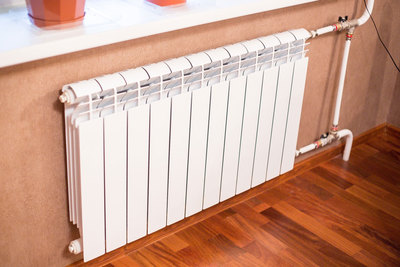
In domestic systems There are many factors that negatively affect radiators.
Draining and filling of liquid occurs frequently.
Technical water supplied through pipes, contains a large amount of debris, impurities and small particles, which scratch the radiator and clog its interior. It is chemically aggressive and can corrode metals.
The pressure value often changesIn the heating system, there are sometimes changes in the level of the coolant in the main lines, causing water hammer. There are different reasons: for example, closing a pumping station tap too abruptly or letting a large amount of air into the pipes.
The devices must be able to withstand these negative influences.
Attention! Necessary compatibility of strapping materials apartments and battery connection devices. Otherwise, contact between dissimilar metals will cause an accident.
Types of radiators for an apartment, their main characteristics, price
There are a large number of devices on the heating equipment market. According to the materials they are made from are divided into four groups, differing both in performance characteristics and in price.
Sectional devices made of cast iron
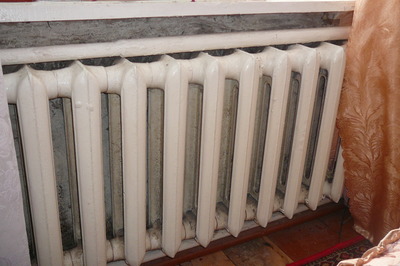
Modern models differ from the usual batteries painted with oil paint. They attractive in appearance, durable and reliable.
Advantages products:
- Undemanding to the coolant. Cast iron is a chemically passive material that does not corrode. A protective film is created inside the radiator, preventing its destruction. Small abrasive particles in the water do not damage the thick walls of the product.
- Ability to withstand high pressure in the system: working - from 6 to 10 atm., test - up to 18 atm. The devices successfully resist water hammer.
- Long service life. If you wash the devices regularly, they will last a long time. 50 years and more.
- Convenient sectional systemYou can buy the optimal number of elements and assemble batteries of the required length.
- Low price: 2500-3000 RUR for 4-6 sections.
Flaws:
- Large mass.
- A significant amount of coolant is required for operation.
- The devices warm up and cool down slowly, so they cannot be used in controlled systems.
- The devices have to be washed frequently due to the rough internal walls, which become clogged with particles and impurities.
- The surface of the batteries is regularly painted, as the coating quickly cracks.
Made of aluminum
These are stylish modern structures of various designs. Manufacturers produce sections of different heights and lengths, from which batteries are assembled. When choosing, consumers take into account the features of a particular room. There are models for every taste and budget.
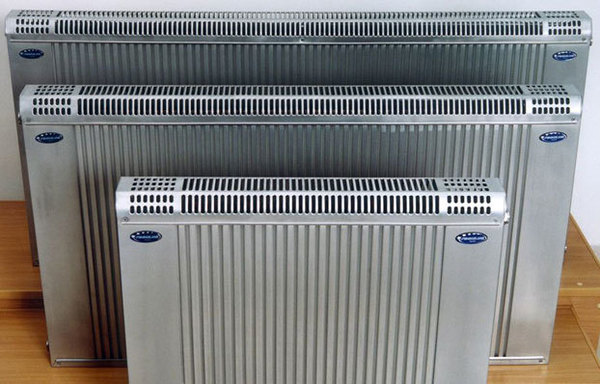
Photo 1. Heating radiators made of aluminum. The devices are presented in different sizes.
Advantages:
- the devices easily heat the room;
- they have small dimensions and weight;
- they are able to withstand high pressure - from 16 to 20 atm.;
- thermal power - about 190 W;
- attractive and varied design;
- affordable price - from 120 RUR per section.
Flaws:
- sensitivity to coolant contamination;
- poor corrosion resistance;
- when the heating is turned off, the devices cool down quickly;
- They cannot be used together with copper or brass fittings - this leads to rust and damage to the radiators.
Steel structures
There are two types of devices: panel and tubular. The first — inexpensive devices made from steel sheets with channels for the coolant. They are used in any type of home.
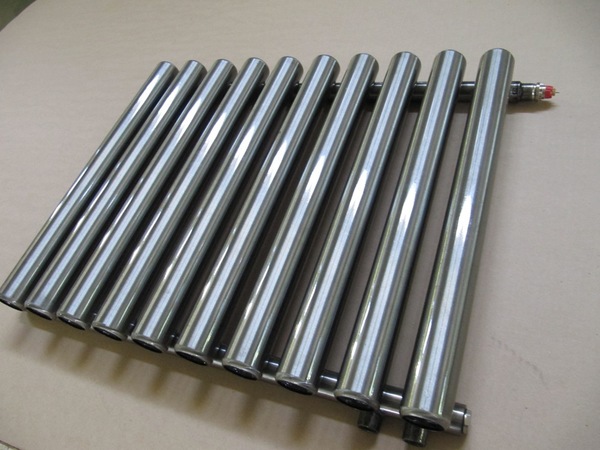
Photo 2. Steel tubular radiators for heating. The device has a rather attractive design.
Tubular — premium products with designer decoration. Stainless steel radiators are especially attractive — expensive devices that are installed in elite houses.
Advantages:
- various design options;
- a small amount of coolant required for operation;
- The products heat up quickly and give off heat well.
Disadvantages of panel radiators:
- low working pressure - from 6 to 10 atm.;
- do not withstand water hammer well;
- short period of operation - 10 years;
- there is no corrosion protection inside the product.
Tubular radiators have better manufacturing quality. Their working pressure is 15 atmospheres, and the term of use is up to 25 years.
Bimetallic batteries
The devices consist of made of steel inner contour and aluminum outer plates. Collectors withstand high pressure. They are compatible with fittings and pipes made of any metal. Aluminum plates conduct heat well.
Companies produce both seamless cast models and devices made of separate sections that are connected with nipples and gaskets.
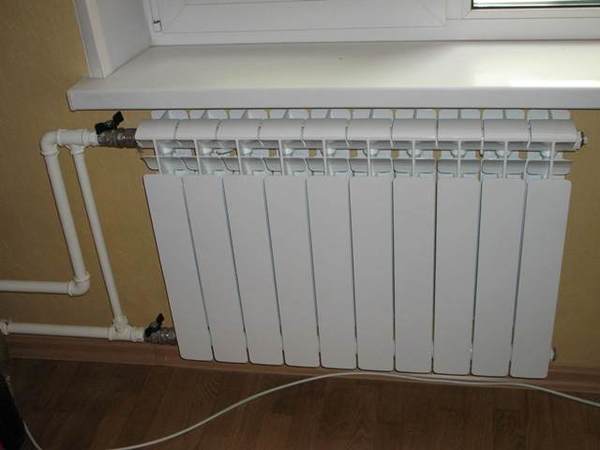
Photo 3. Bimetallic heating radiators. Currently, they are the most popular.
Advantages:
- high heat output;
- small volume of liquid;
- good resistance to aggressive environments;
- pressure up to 35 atm.;
- long service life - up to 25 years.
The disadvantage of the products is the high price. One section costs from 450 RUR
For houses with central heating It is better to use cast iron and bimetallic devices.
For low-rise buildings - steel radiators are added to them.
Aluminum products will do for closed systems, in which the quality of the coolant is checked.
What appliances are best for an apartment?
To buy the most suitable heating device, The following factors are taken into account.
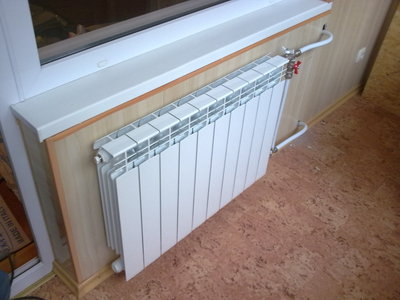
- Functional pressure, for which the device is designed. It should be higher than in the house. In old five-story buildings its value fluctuates from 5 to 8 atm, in new high-rise buildings - from 10 to 12 atm.
- Ability to resist water hammer. Their presence is indicated by clicking and humming sounds in the heating system.
- Heating temperature — its value is proportional to the level of heat transfer of the device.
- Power — for one section is:
- cast iron - 80-160 W;
- bimetal - 200 W;
- aluminum - 190 W;
- steel - 100 W.
- Material of manufacture. The resistance to the negative impact of the coolant and other characteristics of the product depend on it.
- Designer decoration. Modern radiators are beautiful and ergonomic devices. You can always choose models that suit the interior of a particular room.
Popular types of batteries
The following products are most in demand among customers.
RIFAR ALP-500. Radiator of Russian production, bimetal. Thin and light construction with high thermal conductivity. Battery power 6 elements - 948 W, warranty of use - 10 years.
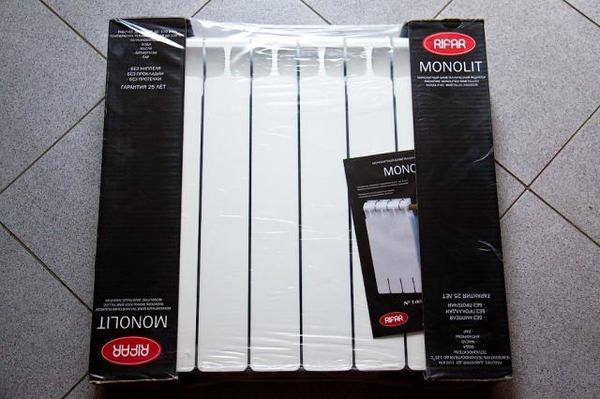
Photo 4. Sectional bimetallic heating batteries from the Russian manufacturer Rifar.
GlobalSTYLEPLUS500. Bimetallic Italian radiator of increased strength. Withstands pressure up to 35 atm.
Thermal Standard Plus 500. High Power Radiator - 1188 W for six sections. The device is made of aluminum, the warranty period is 25 years old.
Buderus Logatrend K-Profil 33 300 1200 made of steel. This is a powerful German radiator with a side connection. It has a built-in thermostatic valve, which improves the operation of the product. Warranty - five years.
MZOO MS-140M-05, Belarusian cast iron radiators of seven sections, reminiscent of old batteries in shape. They are in good demand, many call them the best heating devices for an apartment. The weight of one element is 42.8 kg, heat transfer - 1120 W.
How to calculate the power of radiators and the number of sections in an apartment

When purchasing the device It is important to determine its dimensions correctly. A radiator that is too small will not heat the room in winter, while one that is too large will entail unnecessary heating costs.
To determine the required characteristics of the device for a standard apartment with low ceilings (2.4-2.6 m) use a simple formula.
The area of the room is multiplied 100 Watts and divided by the section power specified in the technical description or on the manufacturer's website. The result is rounded up. The heat output of the device will be equal to the product of the obtained value and the power of one element. The exception is the kitchen - there the fractional part is discarded.
If the house has high ceilings, you can use calculations based on volume. According to SNiP to heat one cubic meter it is required 41 W power (34 W, if double-glazed windows are installed). To determine the required number of sections, the volume of the room is multiplied by 41 and divided by the heat output of one element.
Correction factors:
- If the room has a balcony or is located in the corner of the building, the result is multiplied bya 1.2;
- there are two windows in the room - by 1.3;
- the device is covered with a solid panel - by 1.15;
- in the regions of the Far North - by 1.6.
Useful video
Watch the video, which demonstrates the process of installing a Rifar radiator in an apartment.
Things to keep in mind when choosing the best device
Radiators are high-tech devices designed for various operating conditions. When buying batteries for an apartment, always You need to take into account the features of the heating system in the house.









Comments